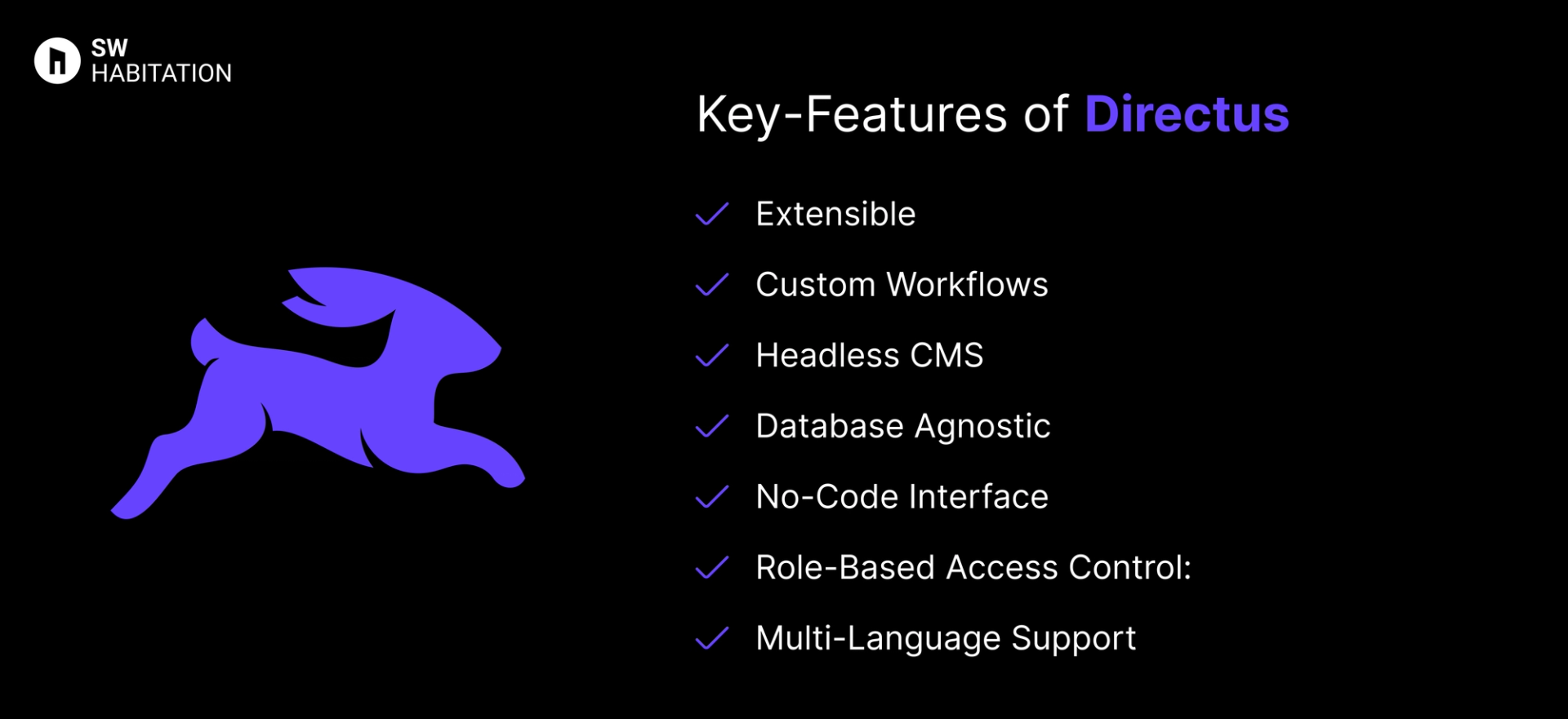Contentstack vs. Directus

Contentstack

Directus
You know, when you wanna make a website or a blog but don’t wanna mess with too much code? That’s where a CMS (Content Management System) comes in. It’s like a super easy tool that helps you add text, pictures, and videos to your site without needing to be a tech genius. You just log in, click a few buttons, and your content is live. It's quite simple, right?
What is Contentstack?
Contentstack is a headless CMS built to help teams create, manage, and deliver content across multiple digital platforms.
Unlike traditional CMS platforms, Contentstack separates content management from presentation, allowing you to deliver content via APIs to websites, mobile apps, IoT devices, and more.
Its focus on enterprise-level content management. It’s built with scalability, collaboration, and performance in mind which makes it a top choice for large teams and large projects.
Key Features of Contentstack


- Powerful APIs: Integrate easily with front-end frameworks like React, Vue, and Next.js.
- Headless Architecture: Decouple content from presentation for maximum flexibility.
- Robust Security: Enterprise grade security features for peace of mind.
- Content Modeling: Design content structures that fit your project’s needs.
- Omnichannel Delivery: Publish content across websites, mobile apps, and beyond.
- Built-in Localization: Handle multi language content natively.
- Version Control and Workflows: Track content changes and manage workflows with ease.
Advantages of Contentstack
- Collaboration Friendly: Built-in workflow management makes team collaboration smooth.
- Highly Scalable: Handles large projects and complex content models effortlessly.
- Top-Notch Security: Enterprise-grade security features to protect your content.
- Omni-channel Support: Deliver content to web, mobile, IoT, and more from a single source.
- Powerful API: Integrates seamlessly with popular front-end frameworks.
Disadvantages of Contentstack
- Learning Curve: It can be a bit overwhelming for beginners.
- Pricing: Enterprise-level features come with an enterprise-level price tag.
- Overkill for Small Projects: Best suited for large scale projects.
What is Directus?
Directus is an open-source headless CMS that wraps around any SQL database, turning it into an instantly accessible API.
Think of it as a control panel for your database, giving you a clean interface to manage content without dictating how your front end should work. Whether you’re building a website, app, or internal tool, Directus lets you work with your data the way you want.
Key Features of Directus


- Extensible: Supports plugins, custom modules, and integrations.
- Custom Workflows: Set up automated actions and webhooks for custom workflows.
- Headless CMS: Provides REST and GraphQL APIs for fetching content anywhere.
- Database Agnostic: Works with any SQL database like PostgreSQL, MySQL, or SQLite.
- No-Code Interface: Friendly UI for non-technical users to manage content.
- Role-Based Access Control: Manage user permissions at a granular level.
- Multi-Language Support: Handle translations directly in the CMS.
Advantages of Directus
- Highly Flexible: Can handle everything from small projects to enterprise-level applications.
- Open Source: Free to use and extend.
- Great for Developers: Full access to the database and API.
- Complete Control: Wraps around your existing database without locking you into a specific structure.
- User-Friendly: Non-technical users get a simple UI to manage content.
Disadvantages of Directus
- No Pre-Built Frontend: You’ll need to build your frontend separately.
- Learning Curve: Offers a lot of flexibility, which can be overwhelming for beginners.
- Self-Hosting Complexity: Requires setting up a database and environment if self-hosting.
Comparison Between Contentstack vs Directus
Use Cases of Contentstack
- Enterprise Projects: Large-scale applications and websites.
- Omni-channel Content Delivery: Publish content across multiple platforms seamlessly.
- Collaborative Teams: Built-in workflows make it easy to manage multiple contributors.
- Complex Content Models: When your content structure is more complex.
Use Cases of Directus
- Multi-Language Sites: Native support for handling multiple languages.
- Teams with Developers and Editors: Developers get full database access, while editors get a clean UI.
- Data-Driven Projects: When you need full control over your database and APIs.
- Custom Apps: Ideal for mobile apps, internal tools, or dashboards.
Other Resources
Conclusion
Headless CMS platforms make managing your website very simple and easy. Whether you’re running a blog, online store, or business, they handle the tough stuff so you can focus on your content.
With a user-friendly interface and the ability to work with any technology, you can create a site that really fits your needs.
These platforms are flexible, secure, and can grow with you. They offer features like custom content, easy editing, and integrations with other tools. Choose the one that fits your requirements and start building your dream website today 🚀
Frequently asked questions
What is Contentstack?
It’s a headless CMS that lets you manage content separately from your website’s design. Great for big projects.
Is contentstack hard to learn?
Not at all. It’s user-friendly, but if you’re new to headless CMS, there might be a small learning curve.
Can I use contentstack with React or Next.js?
Absolutely, Contentstack works well with modern frameworks like React, Next.js, and more.
Is contentstack free?
It’s not free, but there’s a trial to help you see if it fits your needs before committing.
Does contentstack handle multi-language content?
Yes, it’s great for managing content in multiple languages!
Is Directus just for developers?
Nup, While developers appreciate the customization and flexibility, editors and content creators will enjoy its clean and easy-to-use admin interface that requires no coding knowledge.
Can I self-host Directus?
Yes, you can self-host Directus on your own infrastructure or choose the Directus Cloud for a managed experience. The choice is yours based on your needs and preferences.
Can I use my own database with Directus?
Yes, Directus doesn’t require you to migrate to a new database, it connects directly to your existing SQL database and provides a user-friendly CMS interface.
Does Directus support REST or GraphQL?
Yes, Directus provides both REST and GraphQL APIs, so you can choose the one that best fits your project’s needs.
